Sourdough Pasta (3 Ingredient Recipe)
This post may contain affiliate links.
Homemade sourdough pasta is one of the simplest, yet tastiest ways to enjoy your sourdough starter. With a subtle tangy sourdough flavor, sourdough pasta is incredibly simple to make - using just 3 simple ingredients. It beats store-bought pasta hands down!
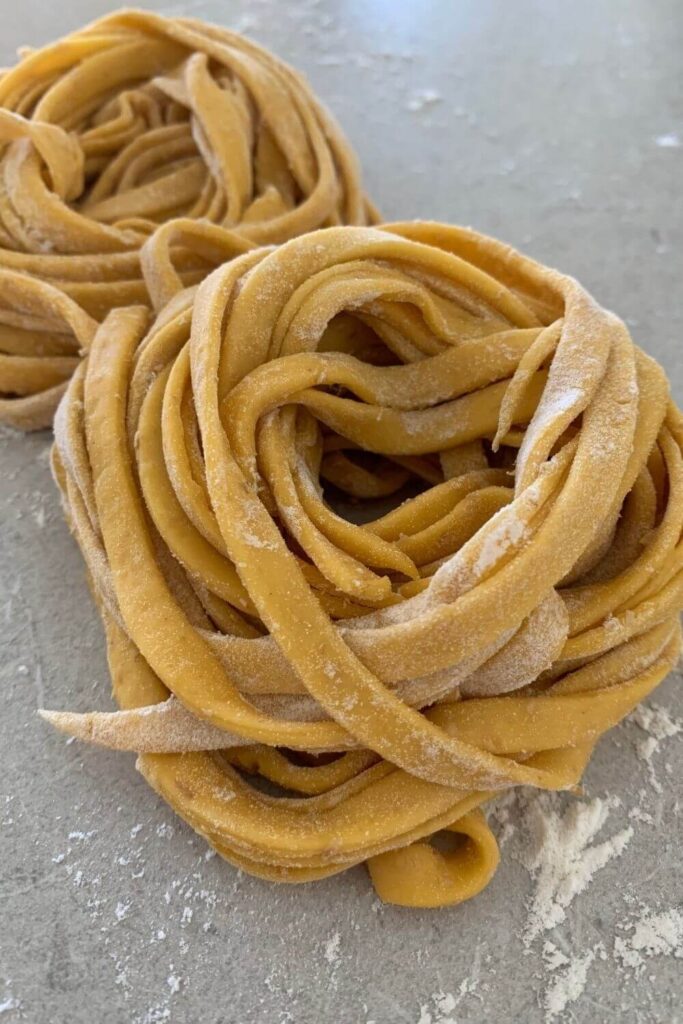
Why You'll Love This Recipe!
- Make Any Shape Pasta - You can use this sourdough pasta recipe to make any type of pasta - from fettuccine, linguine and papardelle to spaghetti or lasagna noodles. It's also perfect for ravioli!
- No Special Equipment - You don't need any special equipment, however a stand mixer and pasta machine do make it easier. Sourdough pasta can be loads of fun to make with kids (you'll find my full guide for sourdough baking with kids here)!
- Better Digestibility - My experience with sourdough pasta is that it doesn't leave me feeling bloated and over full. It's lighter and much easier to digest than store bought pasta due to the fermentation process and health benefits of using your sourdough starter. Pasta made with sourdough starter will have lower levels of phytic acid.
You can see how I use this simple homemade sourdough pasta in our weekly meals in this post - a week of sourdough dinner ideas using sourdough starter. Sourdough pasta goes really well with these sourdough meatballs!
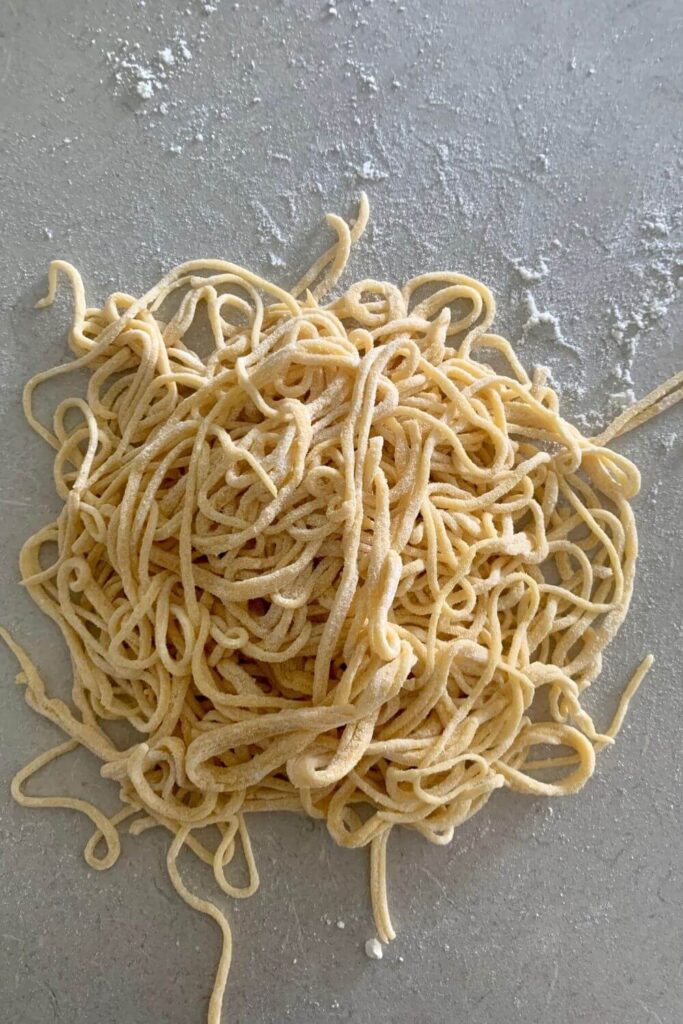
Ingredients
- Sourdough Starter - you can use sourdough discard or active sourdough starter, it doesn't really matter too much for this homemade pasta recipe.
- Bread Flour - I use bread flour to make my pasta, but you can use all purpose flour if you want to. That's the great thing about pasta - it is such a flexible recipe! I will say that the quality of your flour will affect the texture of your pasta, and if you do have it on hand, semolina flour will actually give you the best result (I like to use a 50/50 blend of semolina and bread flour), however using straight bread flour or all purpose flour is absolutely fine here.
- Whole Eggs - I've used fresh eggs from my chickens to create this sourdough pasta. My eggs are approximately 70g each. If yours are smaller, you might need to use 3 eggs instead of 2. The color of your sourdough pasta dough will depend on the eggs you use. I use pasture raised eggs from my farm so the pasta dough is quite dark in color. It cooks up lighter, but it does looks more yellow in these photos.
Equipment for Making Sourdough Pasta
You can make this sourdough pasta from scratch using a rolling pin and a knife. I have done it this way many times.
If you do find you like to make it often though, these things can be a good investment. They will give you a better quality finish and save you time too.
Pasta Machine - This pasta machine is so much fun to use and allows you to make super fine spaghetti, fettucine, lasagne and ravioli dough with ease.
Pasta Drying Rack - This pasta hanger is a great investment. It allows you to dry 3 batches of pasta or noodles at a time. I love that it can be stored away compact. It allows me to dry the pasta up on the counter away from little fingers (for the most part haha).
Pelmeni Cutter/Mold - This fun Pelmeni mold allows you to make hexagonal filled pasta shapes. You can easily make up to 37 at a time. You just roll over it with a rolling pin and then pop them out. While it's not true ravioli, it's my way of making homemade ravioli!
Ravioli Stamps & Cutters - this set of ravioli stamps can make pasta making lots of fun!
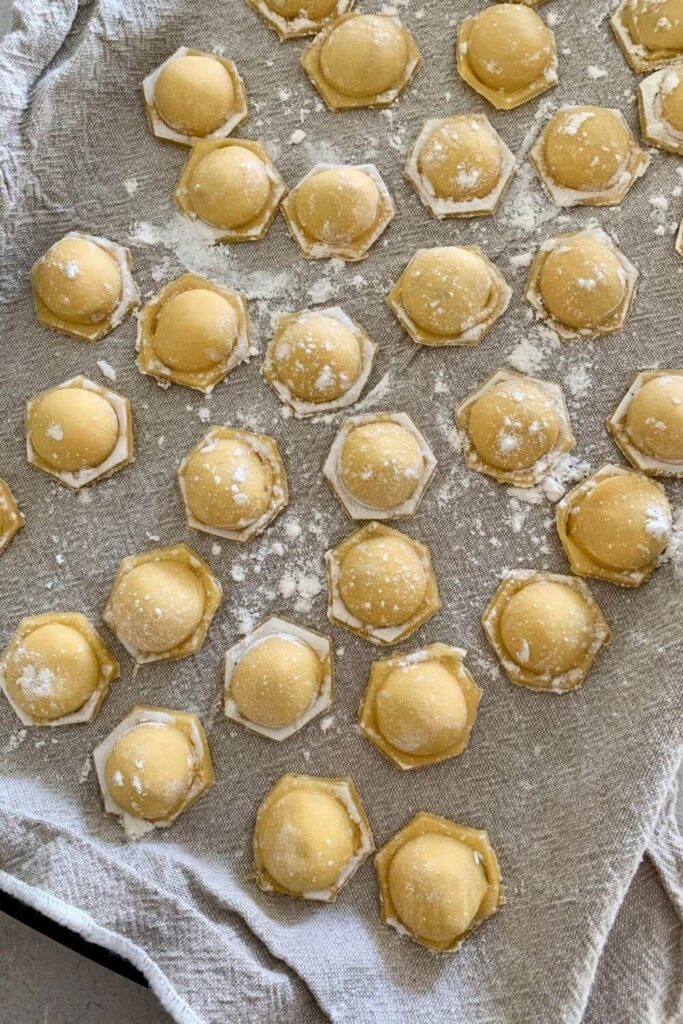
How To Make Sourdough Pasta
Making sourdough pasta could not be easier. You can mix the dough by hand (afterall, pasta was made long before modern mixers, right). But if you do have a stand mixer or Thermomix, you can most certainly utilise these to make the job much easier.
The dough needs to be kneaded very well, so if you are going to do it by hand, you need to really get your muscles working.
Here's the process for making sourdough pasta dough:
- Measure out the three ingredients - sourdough starter, flour and eggs.
- Add the ingredients to your stand mixer bowl and use the dough hook to bring it together into a dough.
- If you are using a Thermomix, knead the dough for around 3 minutes or until it clumps together.
- Turn the dough out on to a floured surface and work it into a ball.
- Place into a bowl covered with cling wrap and let it rest for 30 minutes.
- If you want to do a long ferment, place the homemade sourdough pasta dough in the fridge overnight.
- If you are going to cut it after the 30 minute rest, leave it on the kitchen counter.
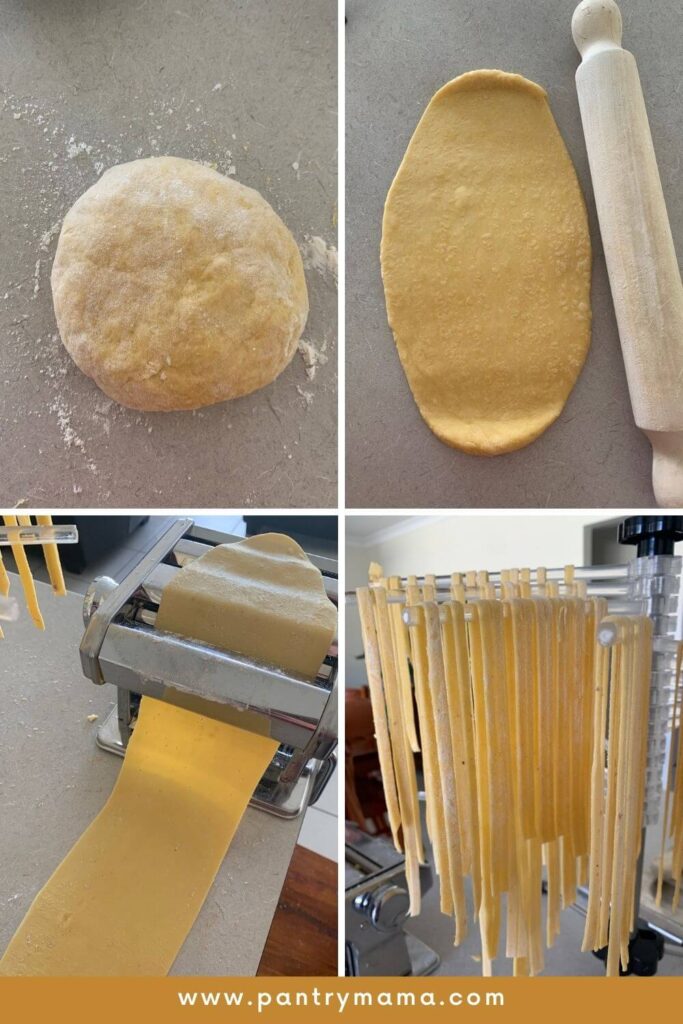
Tips for Rolling and Cutting Sourdough Pasta by Hand
You can definitely roll and cut this sourdough pasta by hand. The trick is to use flour to ensure that the dough is not sticky. Semolina flour is perfect for this!
A cool surface is good to stop the dough from getting too soft and tearing.
Simply roll the dough out to your desired thickness using a rolling pin. It can be easier to divide the dough into 4 pieces and roll each piece separately. This will enable you to get it nice and thin.
To cut into noodles, sprinkle the surface of the dough with flour and gently roll it up. Using a sharp knife, cut the pasta to the desired thickness. Gently unravel the noodles and toss in flour to stop them sticking together.
You can hang them up to dry or just leave them on the counter. Let them dryat room temperature for around 30 minutes before cooking.
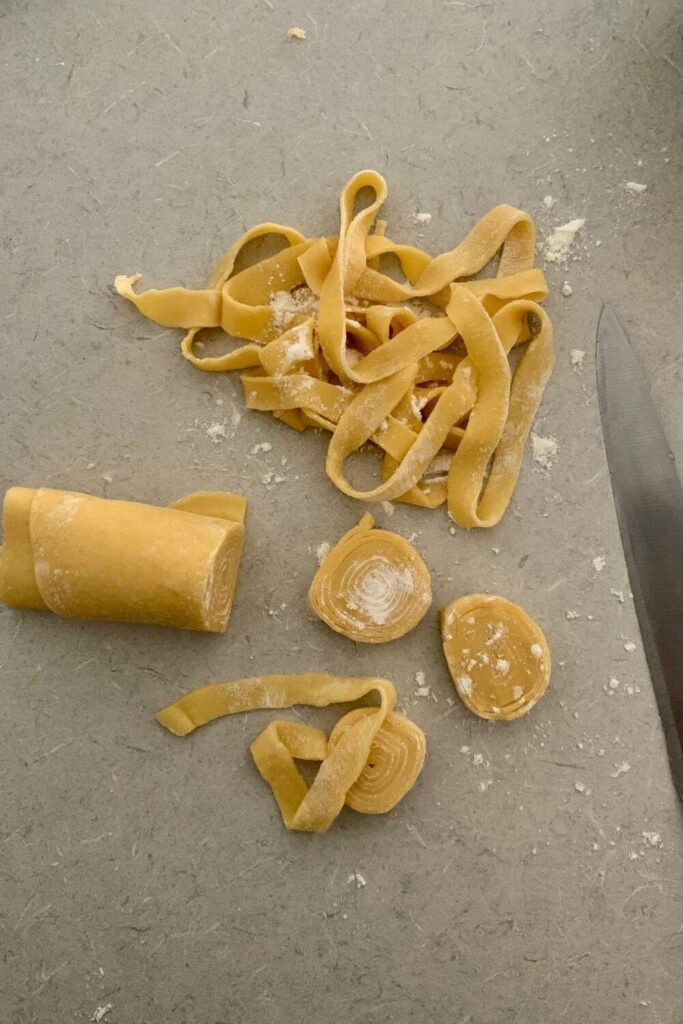
How To Use a Pasta Machine for Sourdough Pasta
I find that a pasta machine is a really easy way to get uniform pasta. It makes it quick and easy to get the pasta dough nice and thin and is also lots of fun for my kids to get involved in.
Most of the time, I don't even need a rolling pin to start the dough off, I just feed balls into the machine and they come out flat!
A few tips to getting the most from your pasta maker:
- Use plenty of flour on the dough before you feed it into the machine. This ensures that the dough will not tear or get stuck.
- If you are making very long sheets or pasta or noodles, it can help to have a second pair of hands to help you feed the dough through the machine and catch the noodles. Otherwise, the extra length can make it a little hard to handle on your own (hello kids, can you help me please!!).
- Start the pasta machine at the thicker setting and work down. This will give you better quality pasta at the end.
- For really good pasta, laminate the dough as you go along. So roll it out and then when you feed it back through the machine, fold the dough over itself so it creates layers.
- Be careful when cleaning your pasta machine. Don't use your fingers to loosen dried on pasta underneath. Speaking from experience, the edges of the metal can be really sharp!
- A pasta machine is really handy for making sourdough crackers too! You can roll the dough super thin so you get lovely, crisp sourdough crackers. My absolute favorites are these sourdough rosemary and parmesan crackers.
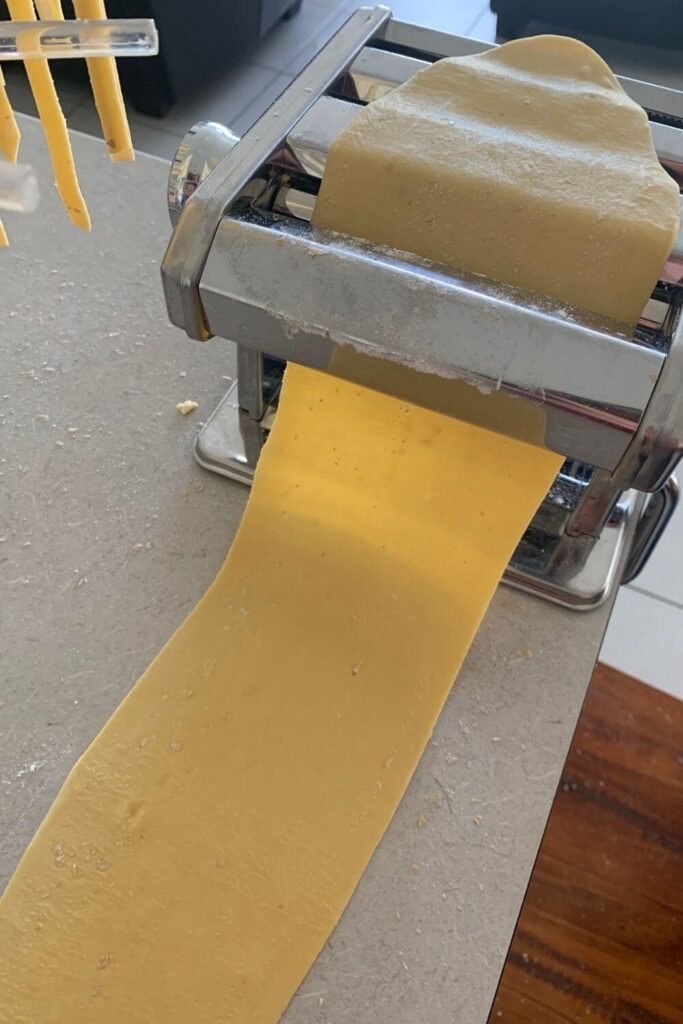
Flavor Variations
While plain sourdough pasta is absolutely delicious in its simplicity. However, if you want to try something a little more adventurous, why not try these ideas:
- Add some finely chopped fresh chives or thyme to dough for a fresh, herby twist.
- You can make pink pasta by adding a little beetroot juice, green pasta by adding a little spinach juice.
- Add some saffron to the dough for a deeper yellow color.
- Why not add some delicate flowers from fresh herbs. Rosemary and chive flowers make beautiful additions, as do torn up nasturtium flowers and basil blossoms.
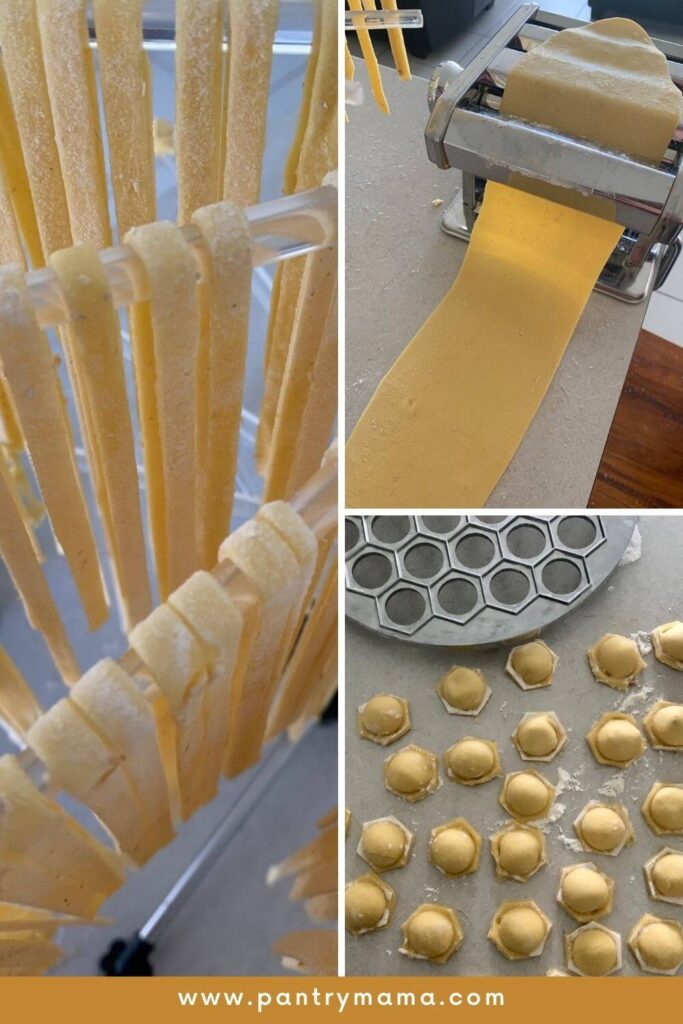
How to Cook Sourdough Pasta
Fresh sourdough pasta is super easy to cook. You'll need a large pot of boiling water with a few tablespoons of salt. Pop the fresh pasta into the boiling water and allow it come to the boil. It takes a lot less time than dried, store-bought pasta. I don't add olive oil to the water when I cook sourdough pasta, but you can if you want to.
Once the pasta has risen to the surface it's generally cooked al dente (to perfection). Test a piece to be sure before removing from the water.
I never actually drain the pasta - I use tongs to remove it from the boiling water and put it into the pan of sauce - that way you toss in some of the pasta water, which is essential for a good pasta sauce! I love tossing hot pasta through this easy bread dipping oil - absolute perfection!
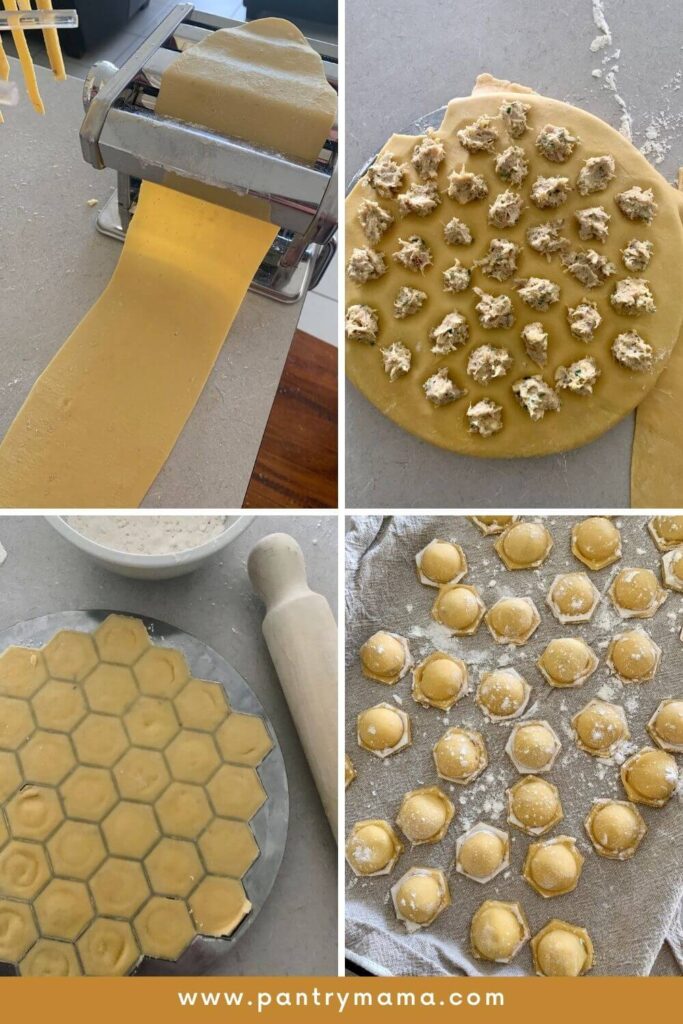
How To Store and Freeze
Homemade sourdough pasta can be stored dry or frozen.
Same Day Sourdough Pasta - If you are going to use it the same day that you make it, you can leave it hanging on the pasta hanging rack until you want to cook it.
Freeze - To freeze sourdough pasta dough, let the pasta dry for at least an hour before you place it into a ziploc bag and freeze. Try to ensure there isn't too much air in the bag when you seal it.
Fridge - You can also store fresh pasta in the fridge for up to 2 days. Let it dry for around an hour and then place into a ziploc bag into the fridge. If you need to store it longer than this, place it into the freezer to inhibit bacteria growth.
Dried Pasta - While it can be dried out completely, the dough does have raw egg so storing in the fridge or freezer would be preferable than just storing it in the pantry in a dried state.
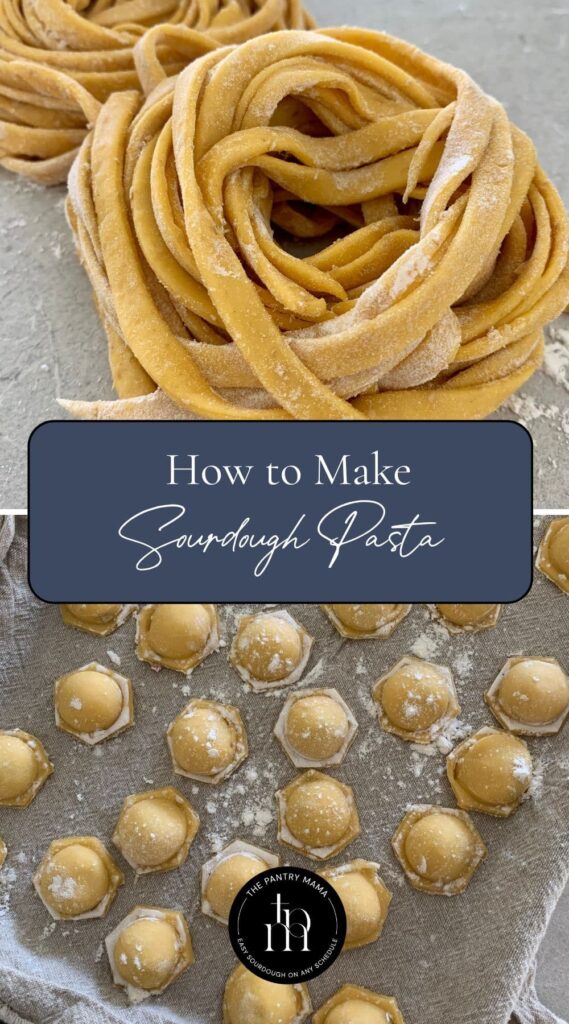
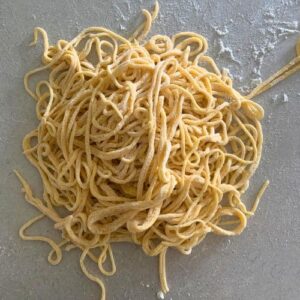
Sourdough Pasta Recipe
Equipment
- Rolling Pin
- Pasta Machine
- Pasta Hanger
Ingredients
- 100 g Sourdough Starter (or sourdough discard)
- 250 g Bread Flour (or all purpose flour)
- 2 Eggs (large eggs, use 3 if yours are small)
Instructions
- You can make this pasta dough by hand or in a stand mixer or Thermomix.
Making Pasta by Hand
- On a clean counter top, pour out 250g of flour, making a well in the centre.
- Crack the eggs into the centre of flour and then pour the sourdough starter on top of the eggs.
- Using a fork, gently beat the eggs and the sourdough starter together, gradually bringing in some of the flour.
- Once the flour, eggs and sourdough starter are roughly combined into a shaggy dough, knead the pasta by hand until it forms a smooth dough. If the dough is sticky, add a little more flour until you achieve the right consistency.
- Set the dough aside for 30 minutes (or overnight if you want it to be slow fermented pasta).
Making Pasta in a Stand Mixer or Thermomix
- Add the flour, eggs and sourdough starter to the bowl. For Thermomix, use the knead function for 3 minutes until the dough is clumping together.For a stand mixer, use the dough hook and knead the dough on low speed (not more than 2) until the dough forms a smooth ball.
- Turn the dough out on to the counter and gently knead it into a ball.
- Set the dough aside for 30 minutes (or overnight if you want it to be slow fermented pasta).
Rolling & Cutting Sourdough Pasta
- Once the dough has rested for 30 minutes - or overnight - it's time to roll, cut and hang the pasta. If you've had the pasta dough in the fridge, let it come to room temperature as it will be easier to roll.
- You can use a rolling pin or a pasta machine (you'll find detailed instructions for both in the post above).
- Use plenty of flour on the surface of the dough to stop the dough sticking to either the rolling pin or pasta machine.
- Once the dough is cut to the desired shape/length, hang the pasta on a pasta hanger for at least 30 minutes to dry.
Nutrition

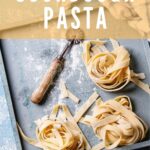

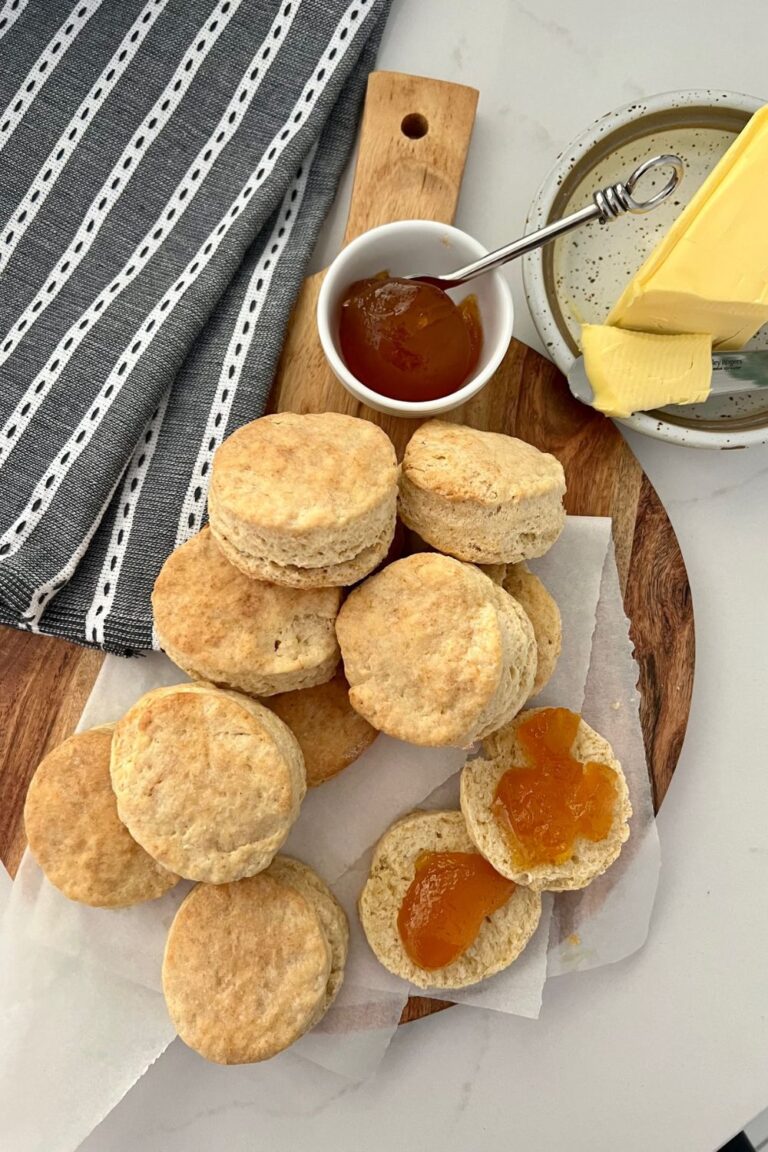
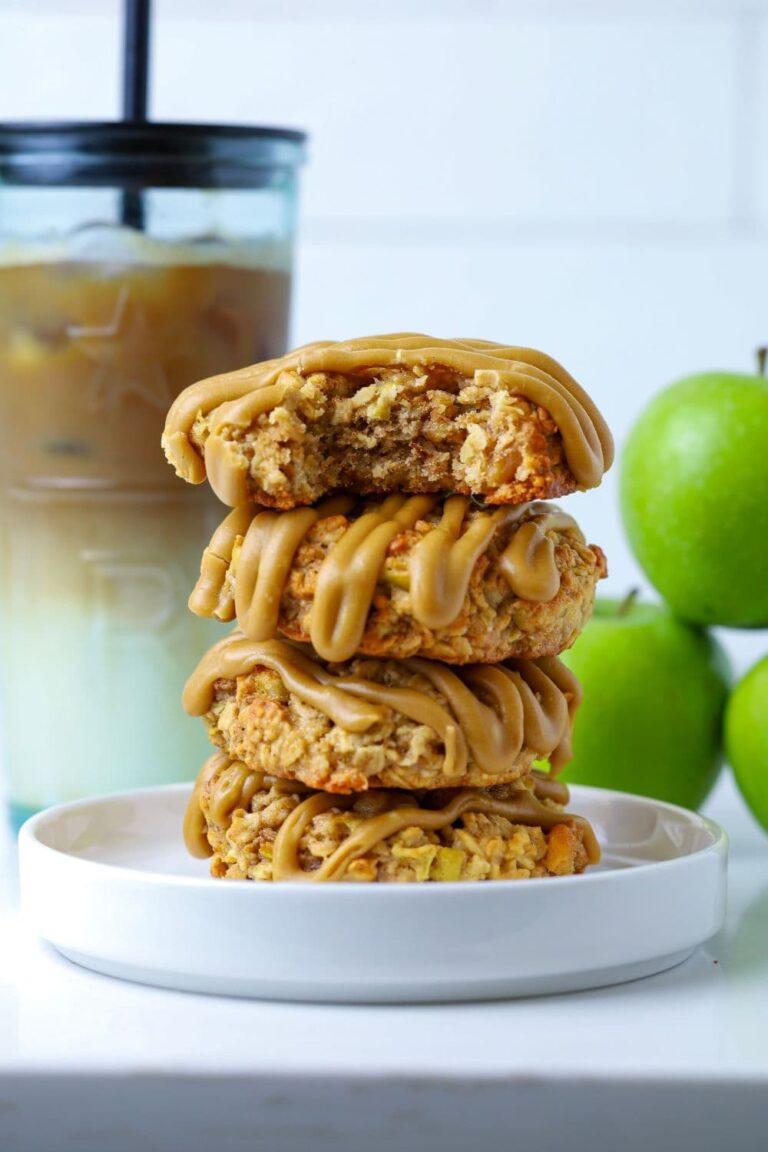
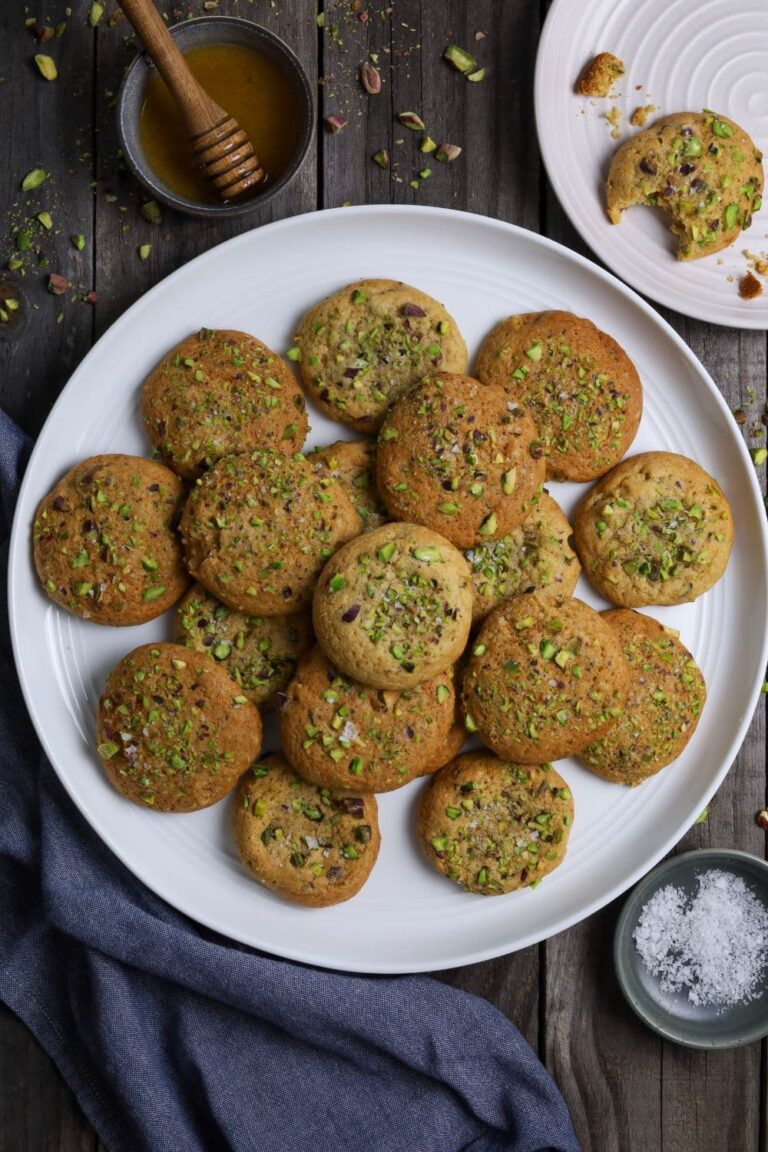

I made these two times in 4 days because the noodles are so delicious. The first batch was a little too thick (hand rolled) so the cook time was longer. These are by far the easiest ever and I always look for ways to use my starter. This recipe goes into my frequently used file! Thank you.
Should we add some salt?
Great recipe. I doubled for a family lasagna but didn’t need to in the end… so froze the rest of the sheets. Worked nicely in the lasagna and definitely gentler on the tummy compared to whole wheat pasta. Thanks!
I love this recipe, I am looking for a sourdough recipe that also includes fresh spinach, not just the juice. Any ideas? Ive thought maybe make the recipe, add the spinach then compensate with additional flour for the added liquid.
Thoughts? 😀
We haven't tried it, but I bet it would work! I would chop the spinach as fine as possible. Please let us know if you try it.
I tried this last night and it seemed to work out just like it said! I was planning on having it for dinner tonight so I let them dry on the counter in Tupperware. When I woke up this morning, the pasta had rose and now is one huge piece. Can I work it again into pieces or is it trash? What can I do in the future?
If you are drying them, you don't want to put them in tupperware as this won't allow the moisture to escape 🙂 I find it's best to make the pasta, allow to dry for a bit on the counter and then store in the fridge or freezer before using to ensure the yeast don't take over.
My husband and I have leveled up in life by making this tonight. After letting rest in the fridge overnight, we made some fettuccine and the texture was perfect after boiling 10 minutes. I will be using this recipe very frequently now. 👌
Instead of all purpose flour could you use semolina or a pasta flour?
Absolutely you can do this, I've added notes for this in the ingredient section 🙂
I meant to say use semolina or pasta flour instead of BREAD flour?
I absolutely LOVE making fettuccini noodles with this recipe! It’s so easy and absolutely delicious! Thank you for sharing your secrets on making such amazing noodles. Can’t wait to venture into lasagna & more!
Please let us know what you try next, Katie! So glad you love this recipe. Thank you so much for your review. 🙂
I made a batch a couple days ago ... didn't get to it until day. It actually rose quite a bit in the fridge, so I thought I over proofed it. But went for it anyway, and it turned out amazing! Nuttin' but fresh pasta from now on. Really is delicious and so easy! Thank you for the recipe!
We love to hear that, Susan! So happy you enjoyed it. Thanks for your review. 🙂
Anyone have any recommendations for this recipe that would work with a Phillips 7000 pasta maker (mixes dough and then extrudes it through a pasta die)? This machine requires a more "crumbly" dough and this recipe looks as though it's quite wet.
This isn't necessarily a wet dough. If you do want it "crumbly" I would just add a little more flour, say 50g of flour and see how that goes. Alternatively, use just one egg. See what works best for you and your machine.